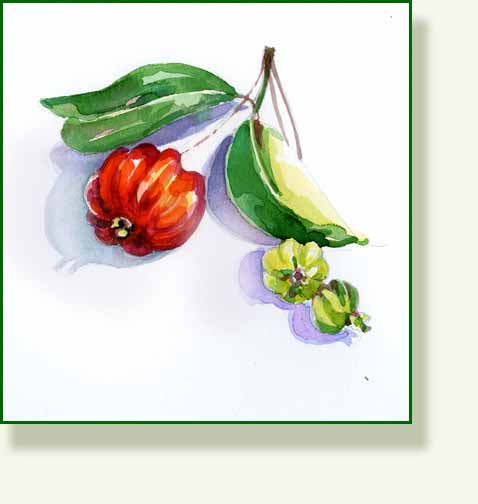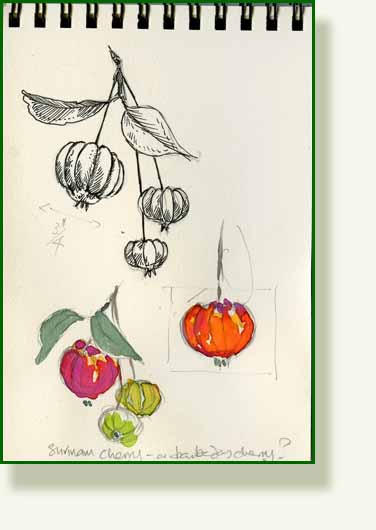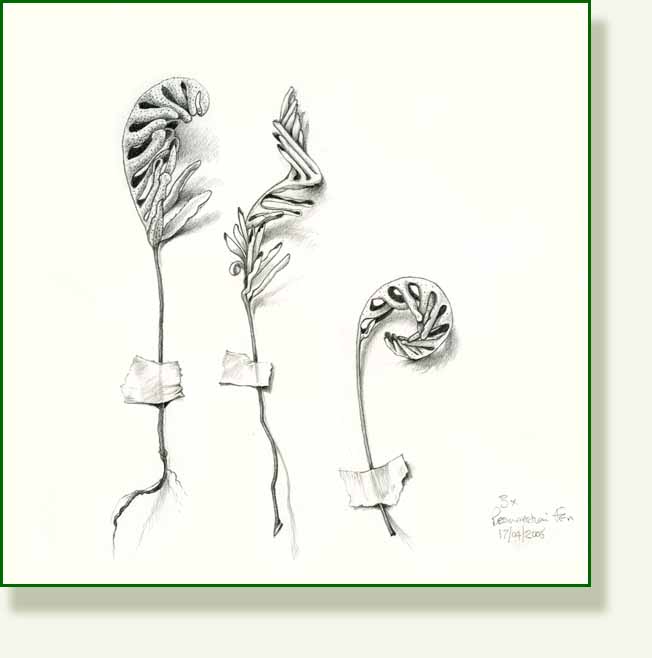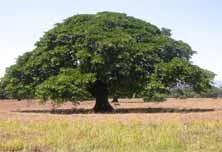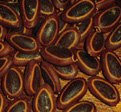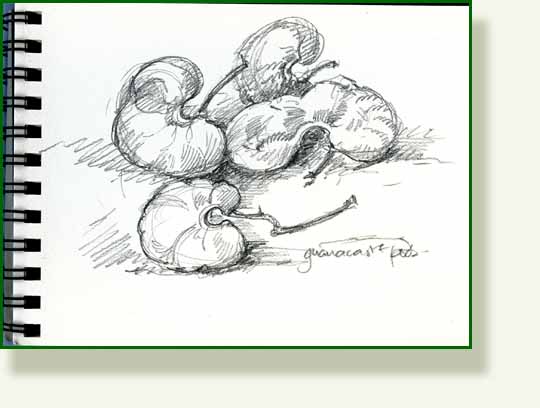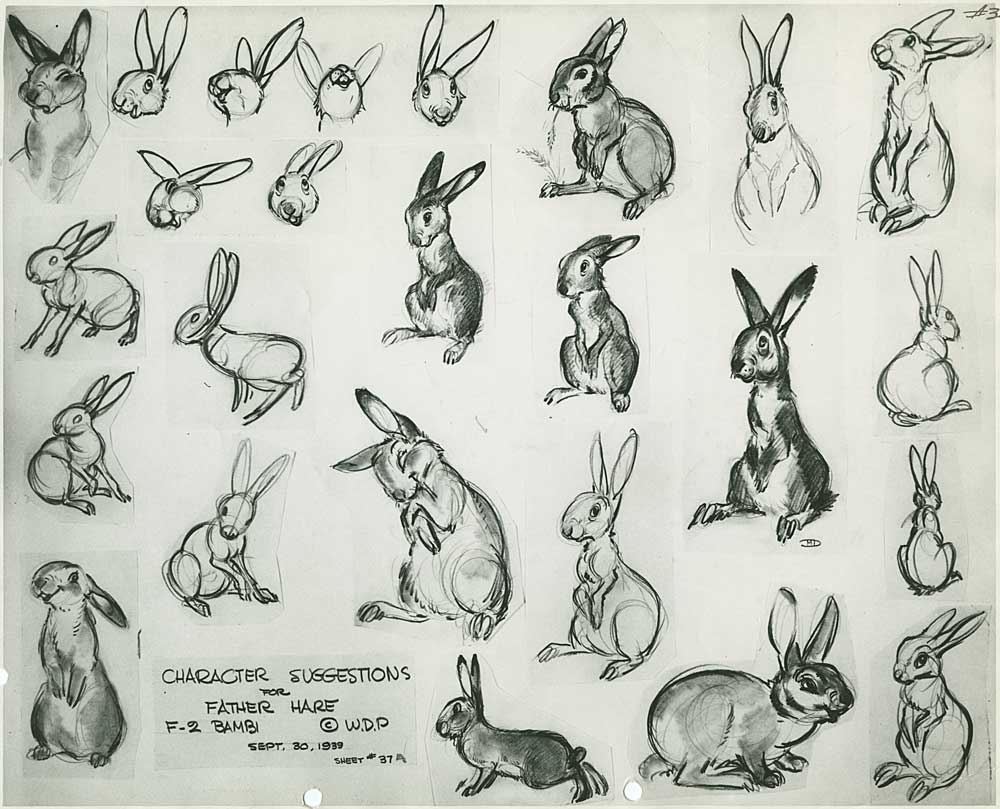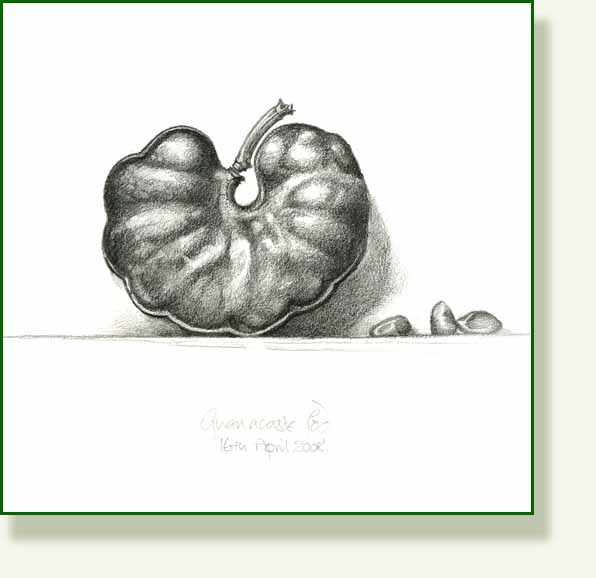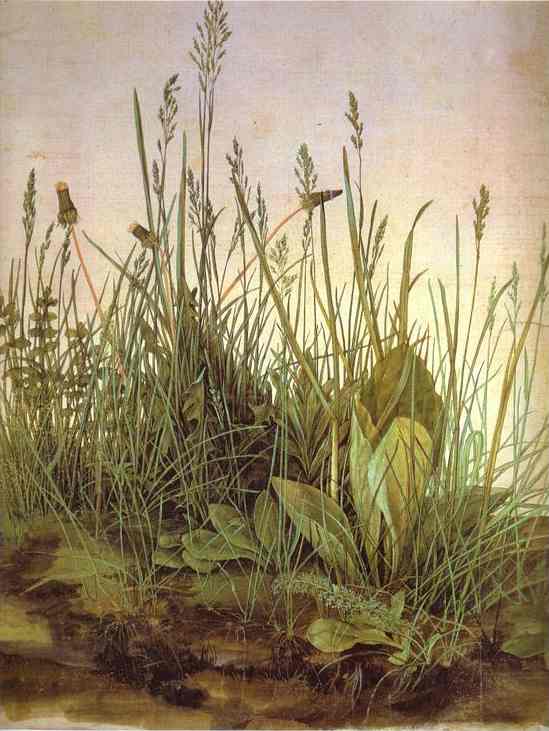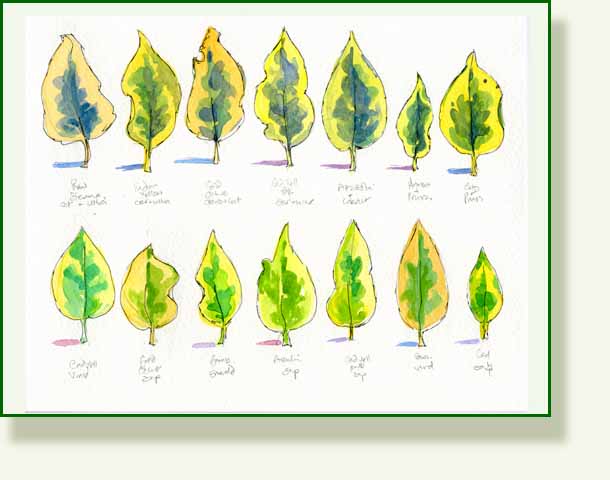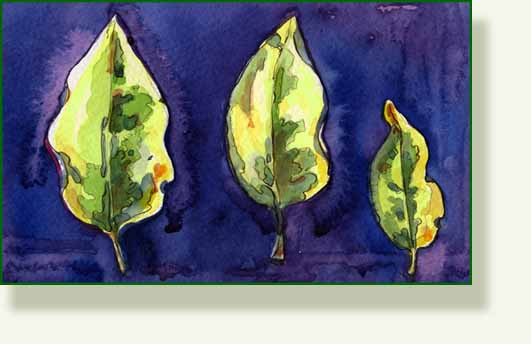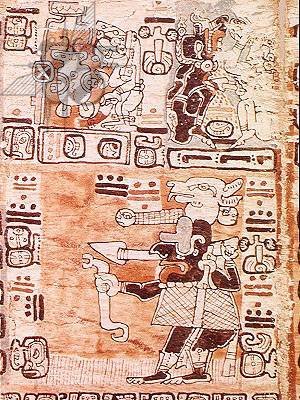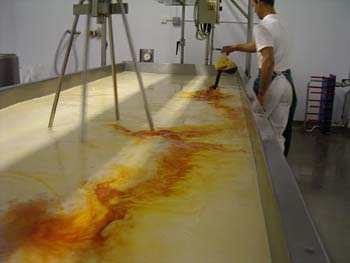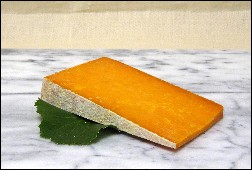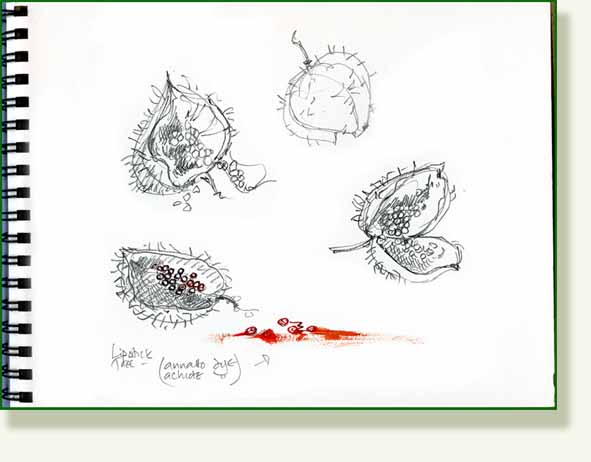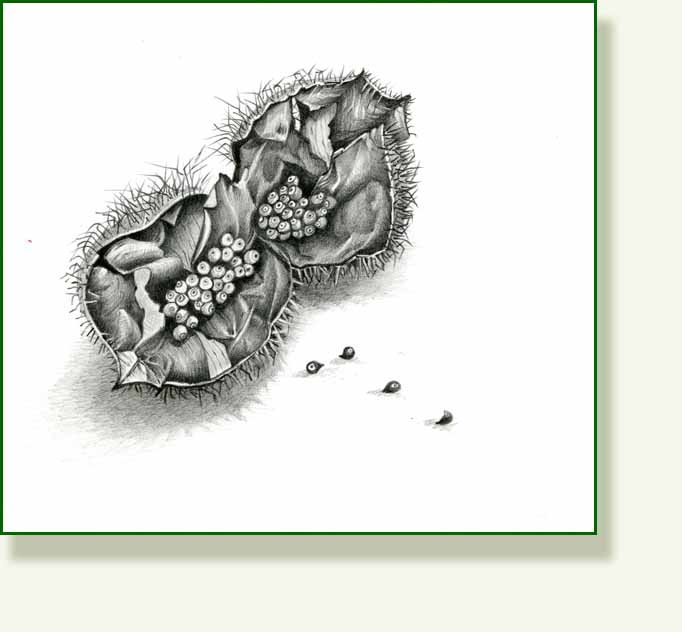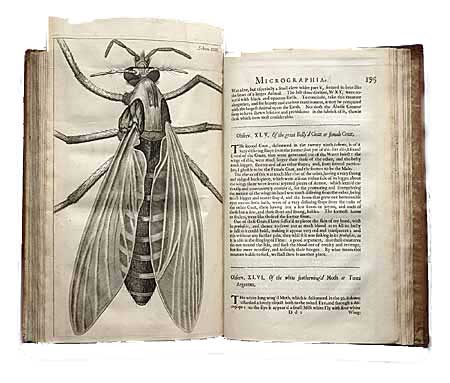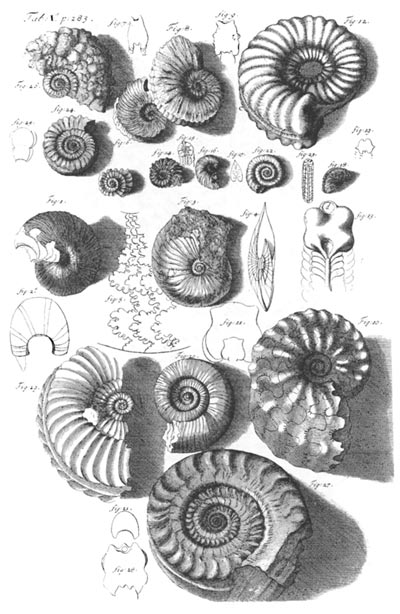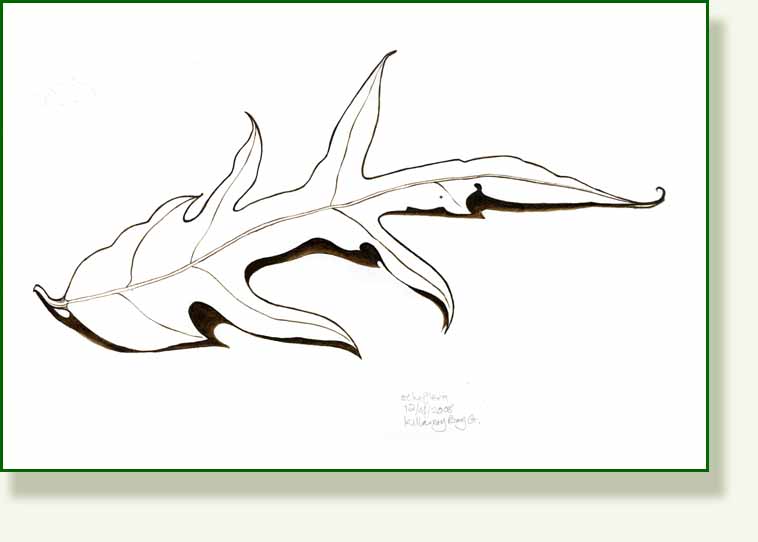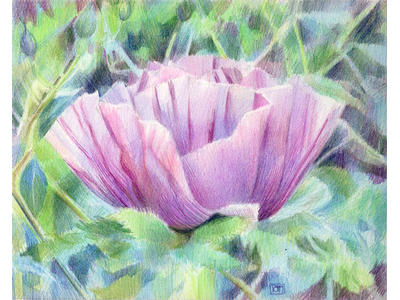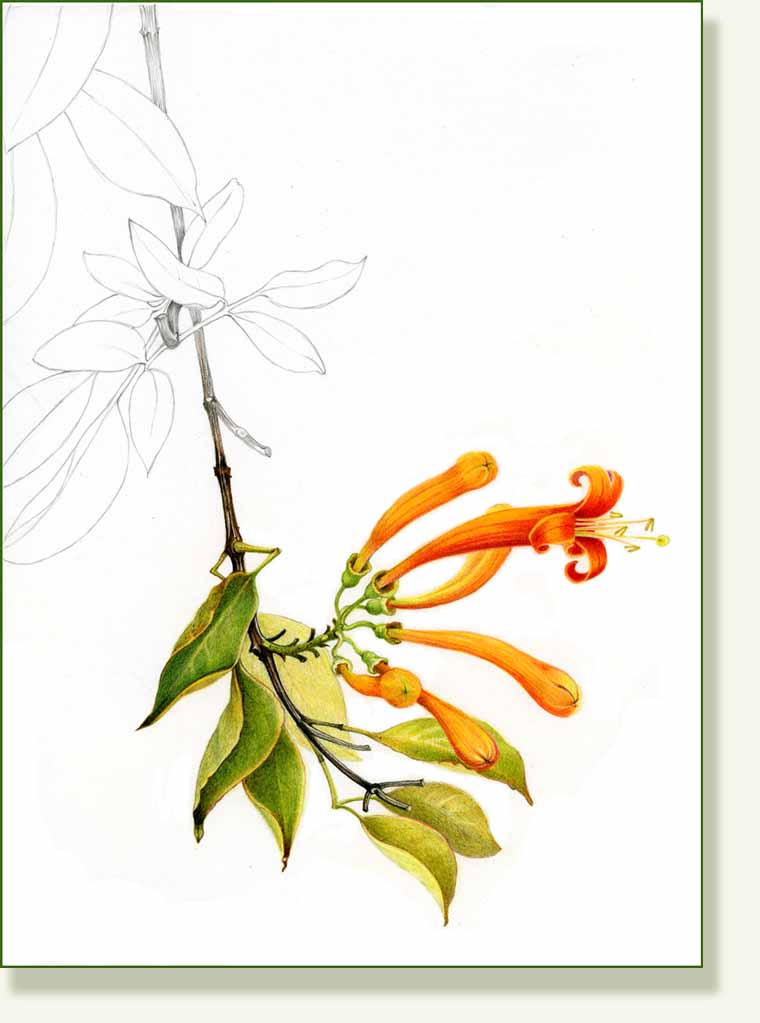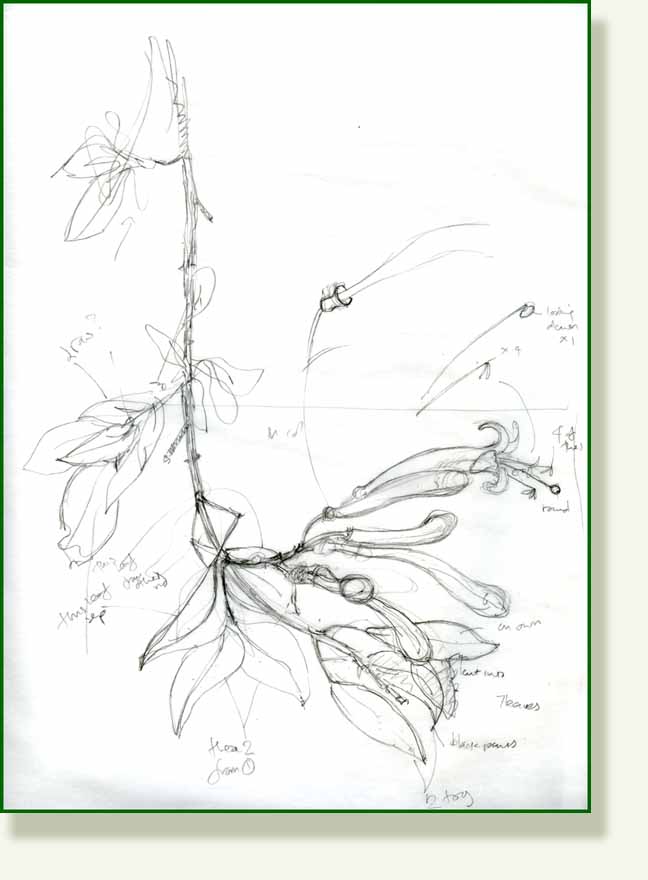Today I have returned to sorting out the paints and looking at pigments, so every possible surface is covered with paint in tubes, and paint in pans and little square painted samples of all of them, with notes on transparency, staining, granulation etc. It’s a long and absorbing job and shows how completely misleading the names of paints can be as regards their pigments. Pigments are a fascinating subject in themselves and I have spent hours reading and looking and trying to commit some of the unpronounceable chemical names to memory. My charts have sub charts and all my notes have foot notes.
However I had to draw this nice leaf today before it shrivelled up. So here are a couple of quick studies of a Rock Fig leaf, ficus palmeri. The rock fig is one of the Strangler Figs and this leaf has a beautiful vein structure, with thick red raised veins in the centre turning to cream towards the edges, set against the dark green of the leaf blade.
Strangler figs, as their name implies, can be less than kind to their hosts. They start life as epiphytes high up on the branches of host trees from where they send out roots which encircle the host’s trunk and eventually reach the ground. These roots then enlarge and squeeze the host tree’s trunk while the upper branches overshadow it and take all its light. The host may eventually host die and rot, leaving a hollow giant fig tree. Where no trees are available they will still feel an imperative to strangle something, so in a desert situation they are reduced to the slightly less productive occupation of strangling rocks… hence the Rock Fig.
In desert areas of California the roots of the Rock Fig unite to coat the vertical rock faces and are described as resembling strange wooden lava flows or tumbling like pale frozen waterfalls over the cliffs. These particular leaves are beautiful but the roots of the strangler figs are by far their most interesting feature. Next week I hope to spend 5 days week drawing outside at the Gardens and will have chance for some great strangler root studies.
___________________________________





